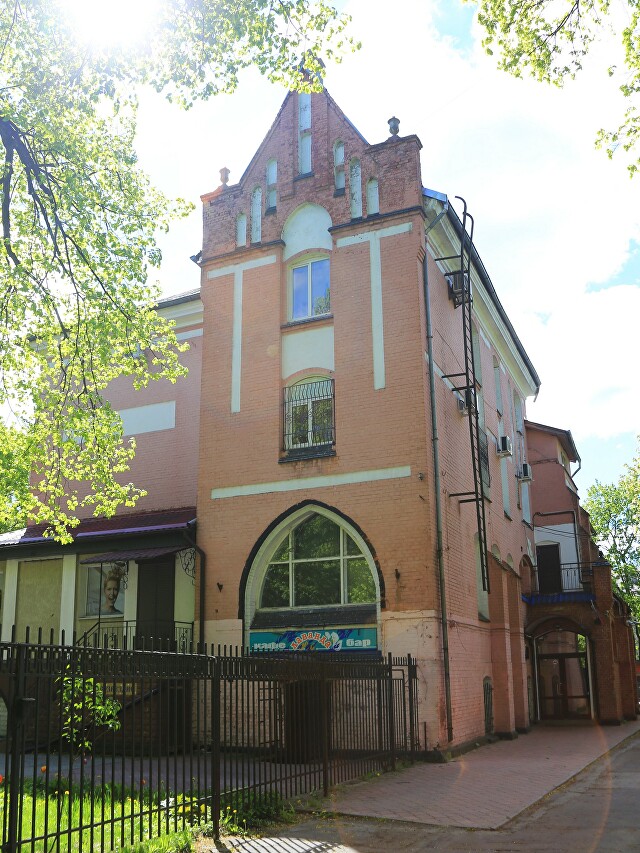Amalineau, Krasnaya and Shiller Streets, Kaliningrad
The eastern border of the Amalienau district runs along Krasnaya Street, which starts from the transport stop "Central Park of Culture and Recreation on Mira Avenue. The first house on the right at number 3-5 (in the old buildings of Kaliningrad, the European numbering system is adopted, not by houses, but by entrances), will please you with large balconies with patterned metal grilles. Now most of the balconies have been turned into glazed verandas, and many grilles are covered with plaster on the principle of who is in what much. Let's hope that the house will be returned to its historical appearance someday.
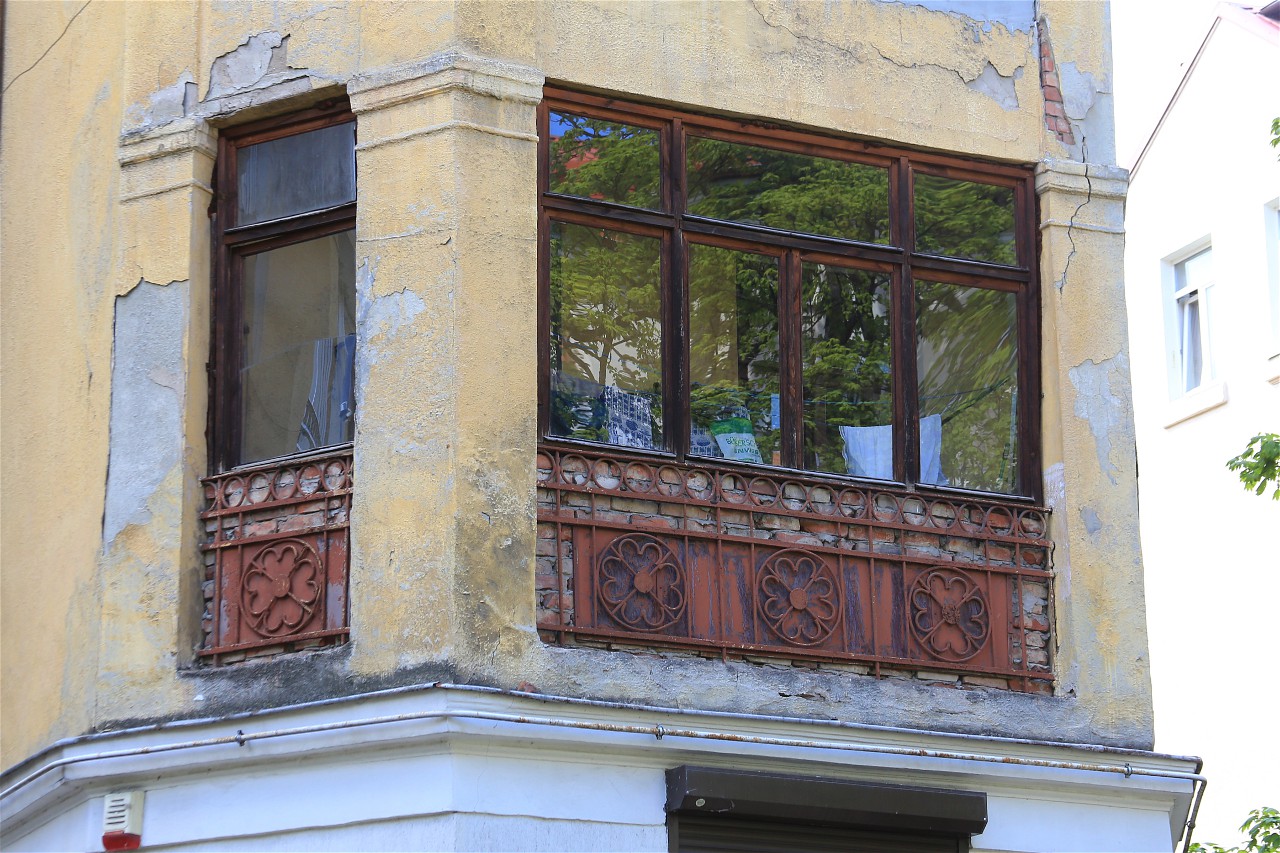
The house opposite, at number 6-10, has recently been restored to an authentic state. It was built in the late 10s of the 20th century, its facade is decorated with double semicircular bay windows.
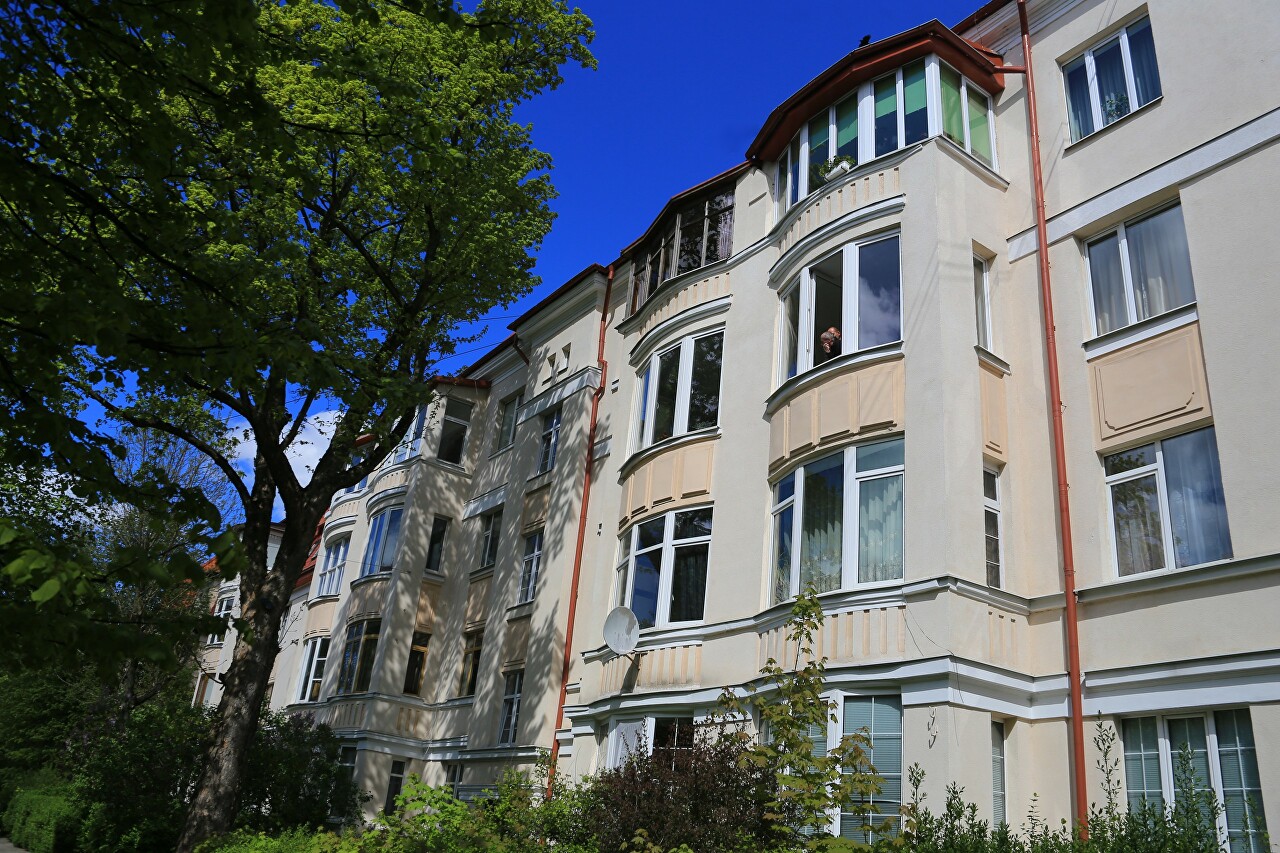
The next three houses on this side of the street have a similar architecture, only with a different geometric decor.
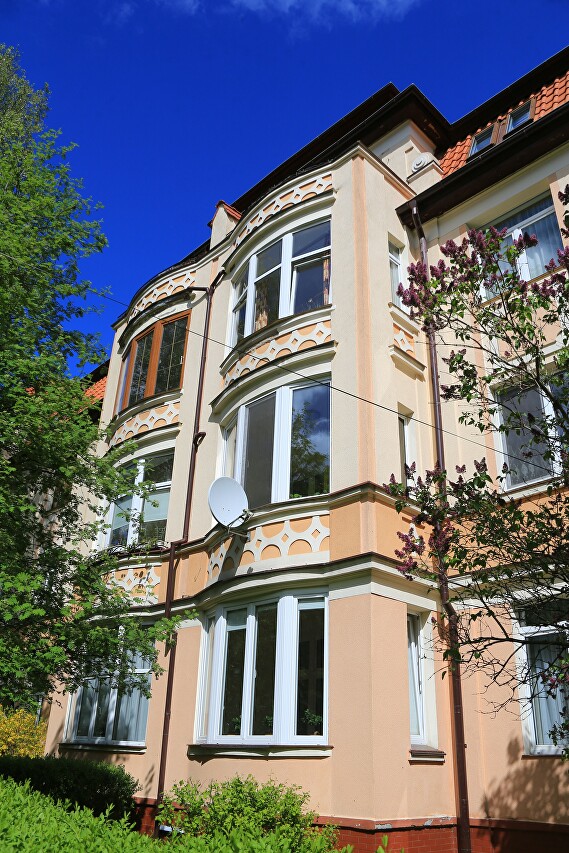
These houses have also been recently restored and taken under state protection as architectural monuments, and what are the corresponding signs informing about.
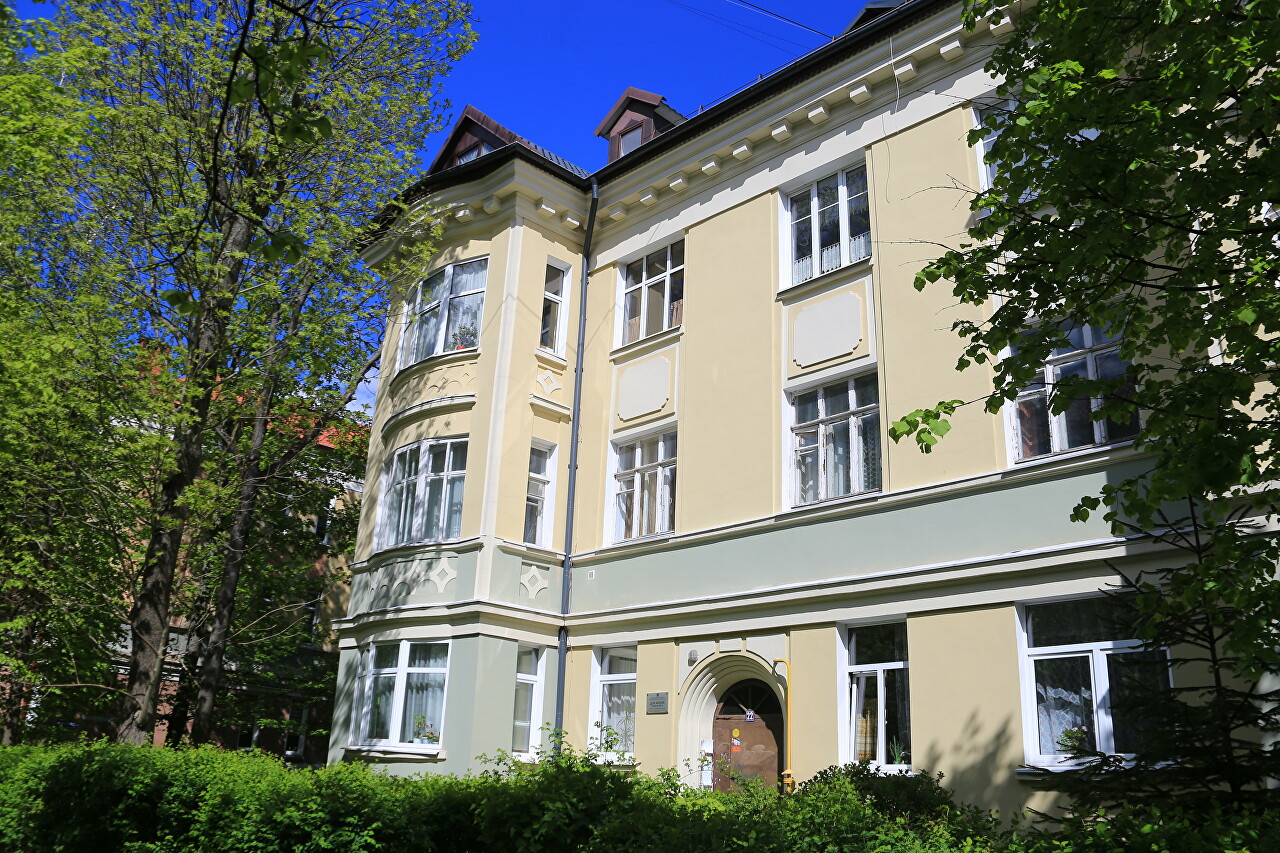
The houses on the left side of the street were built in 1912-13, also have bay windows,but without decorations. The Alter Haus (Old House) museum is located in the house at number 11-13. This is the apartment where the Konigsberg merchant Gustav Grossmann lived. Now it recreates the interior of the 20-30 years of the last century. The museum is open from Monday to Saturday from 10: 00 to 17: 40, the ticket price is 600 rubles (about 7 euros).
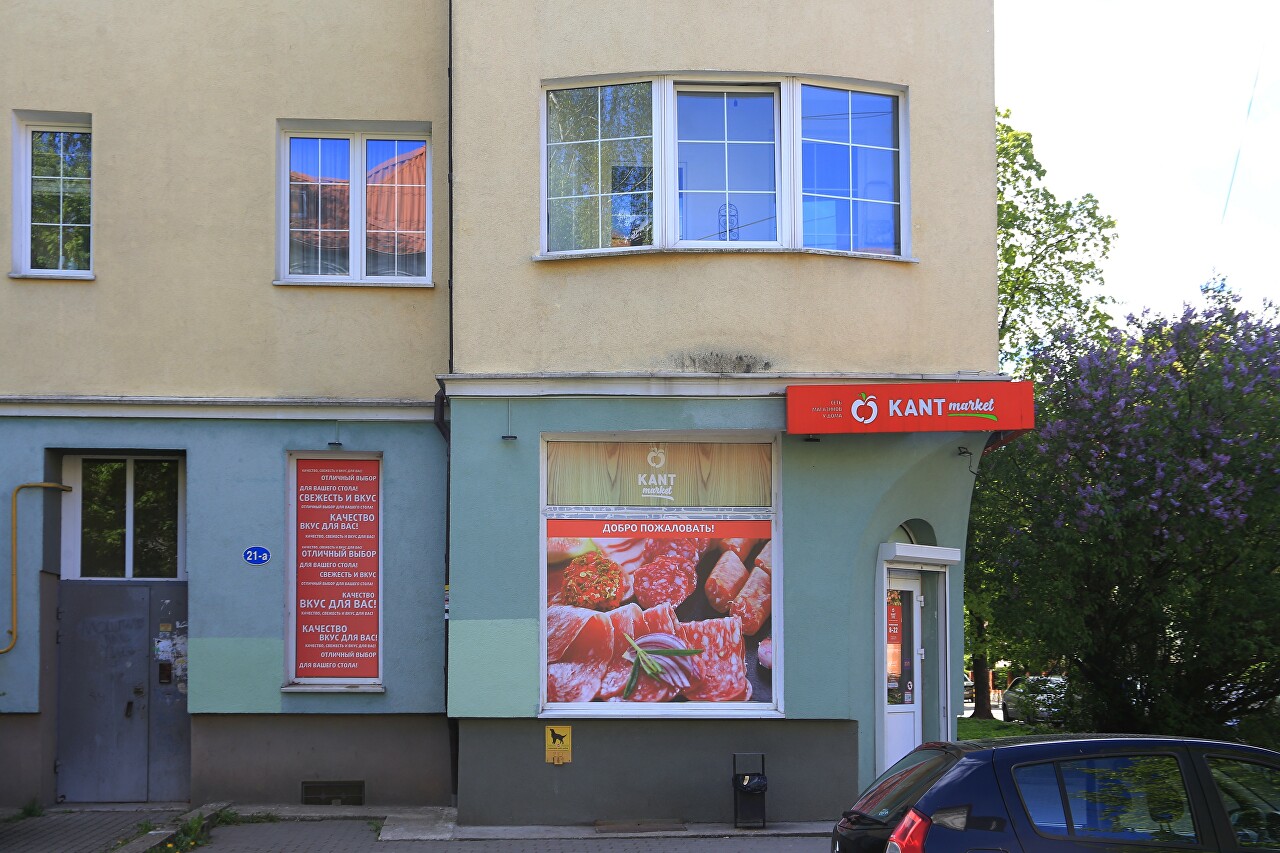
Then I turned onto Stepan Razin Street, where I noticed the house at number 19.

This is a two-storey mansion with an attic for 6 apartments with a garage on the ground floor.
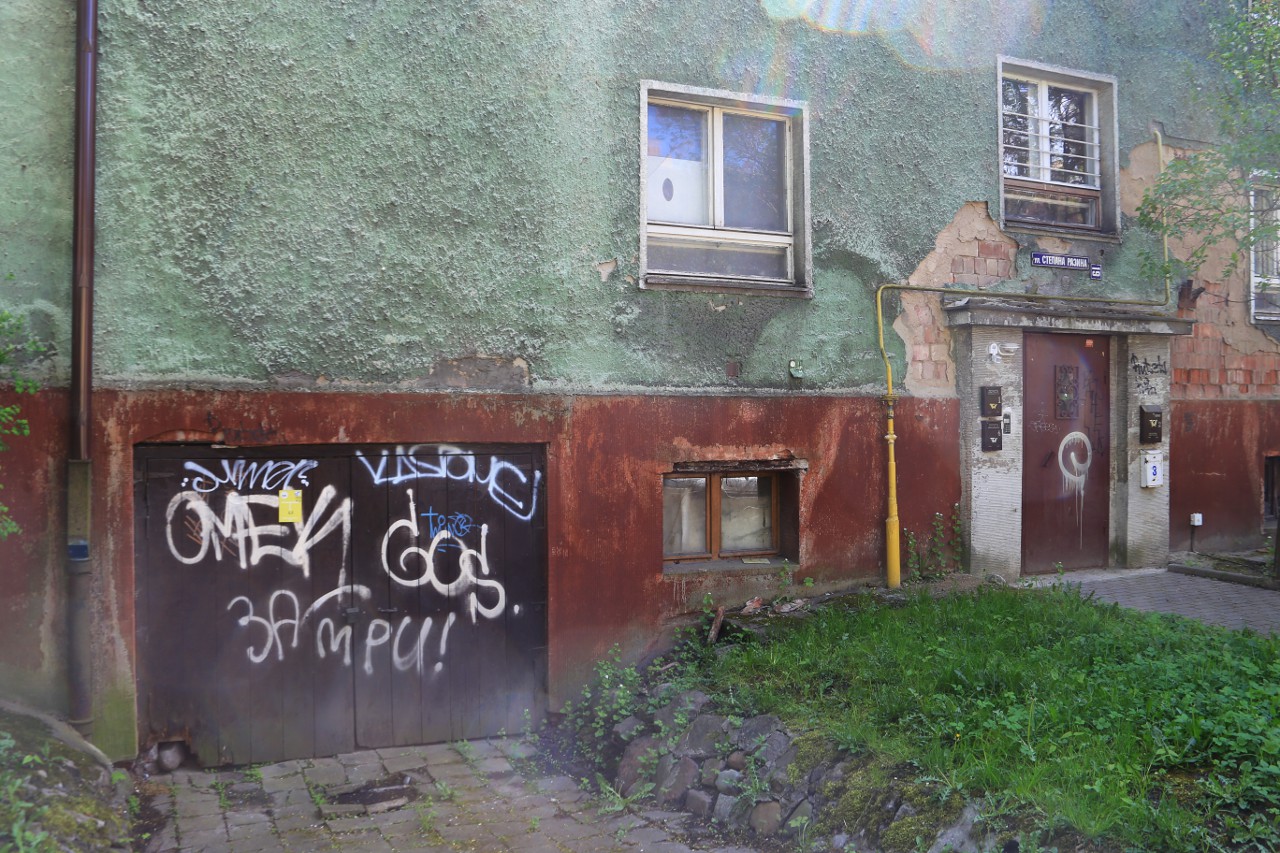
I was not too lazy to go around it and from the side of the yard I found a semblance of an open veranda and a small vegetable garden with a greenhouse. Beds in German cities can still be found even among high-rise buildings.
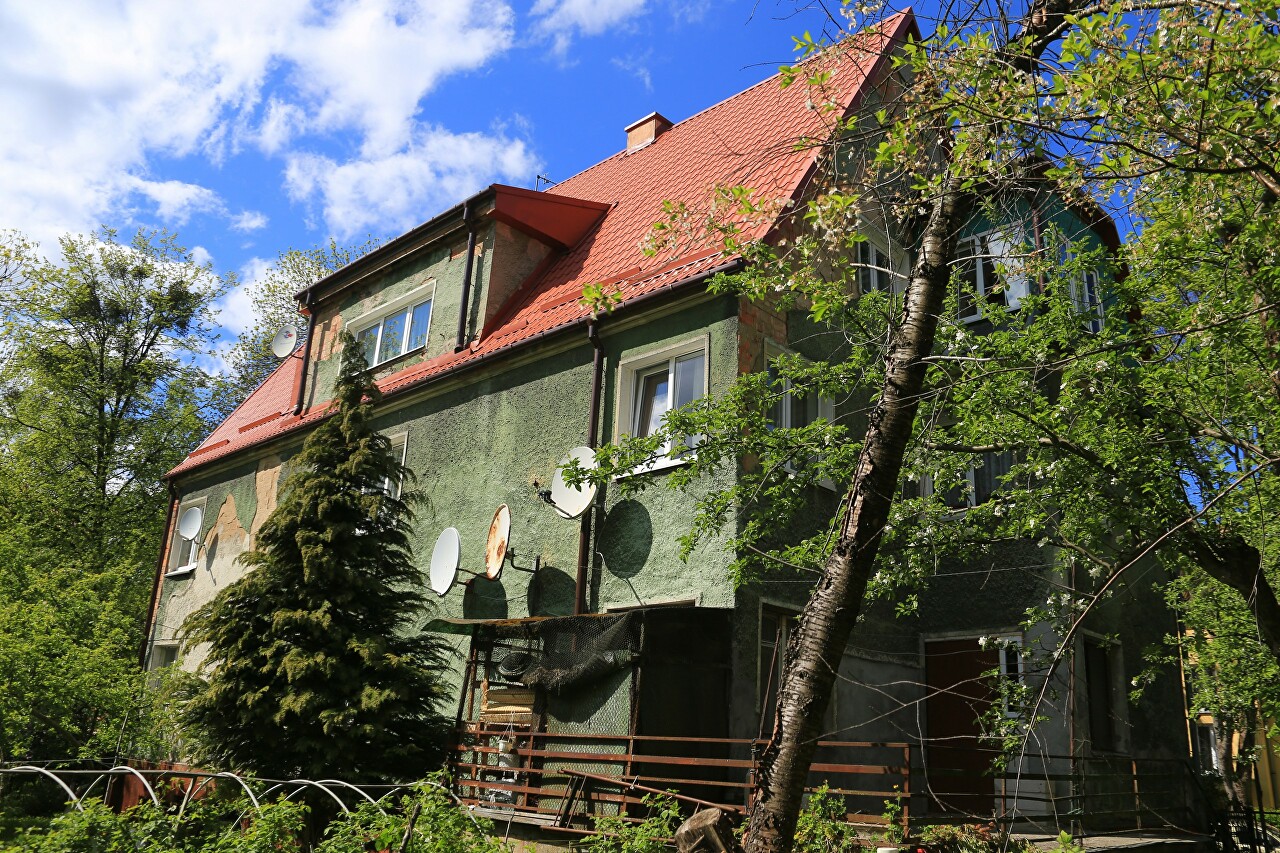
At the back of the yard, the vegetable gardens are crowded by a two-story building that imitates a half-timbered building, obviously of recent construction.
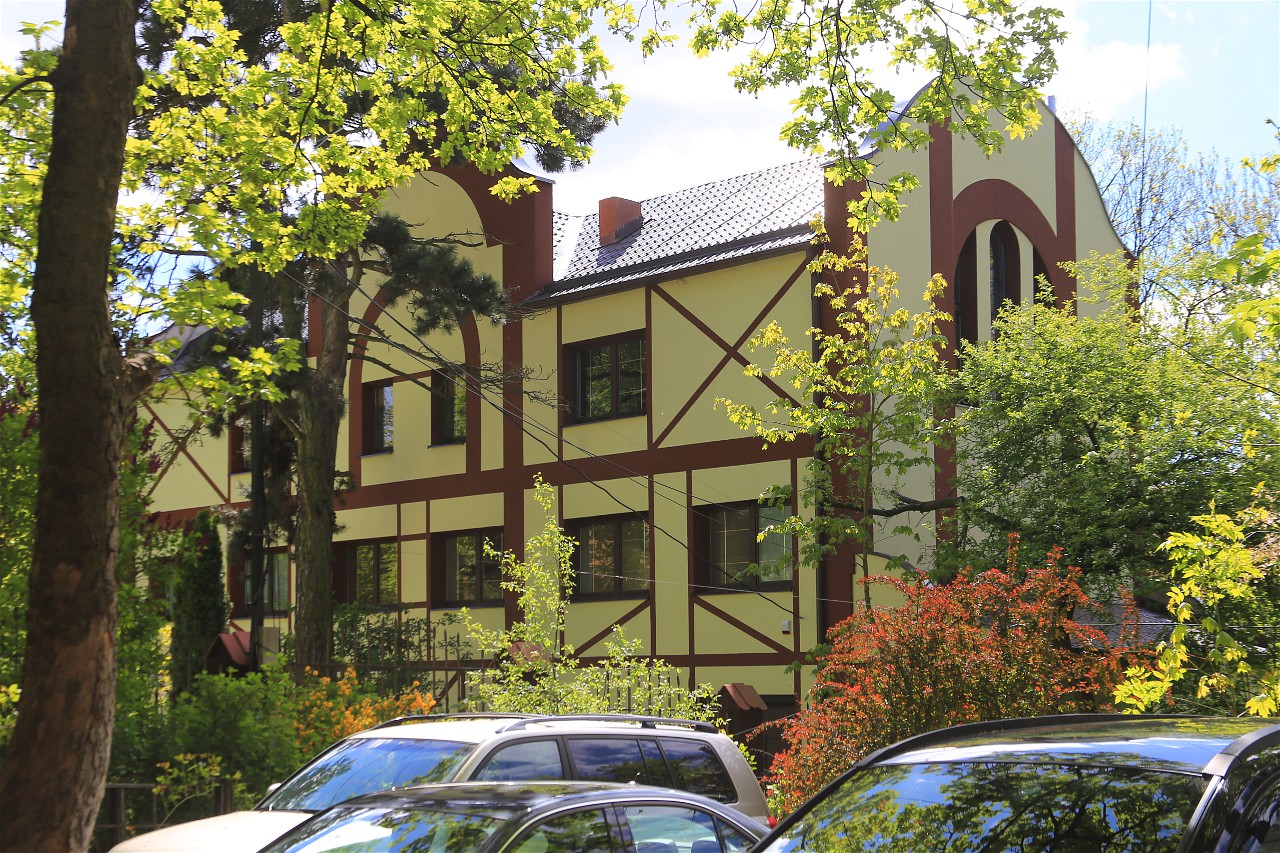
Passing through the courtyard, I found myself on Schiller Street (by the way, the street has retained its Prussian name, Shillerstraße), next to a small two-story mansion with an asymmetric facade and brick decor at number 5.
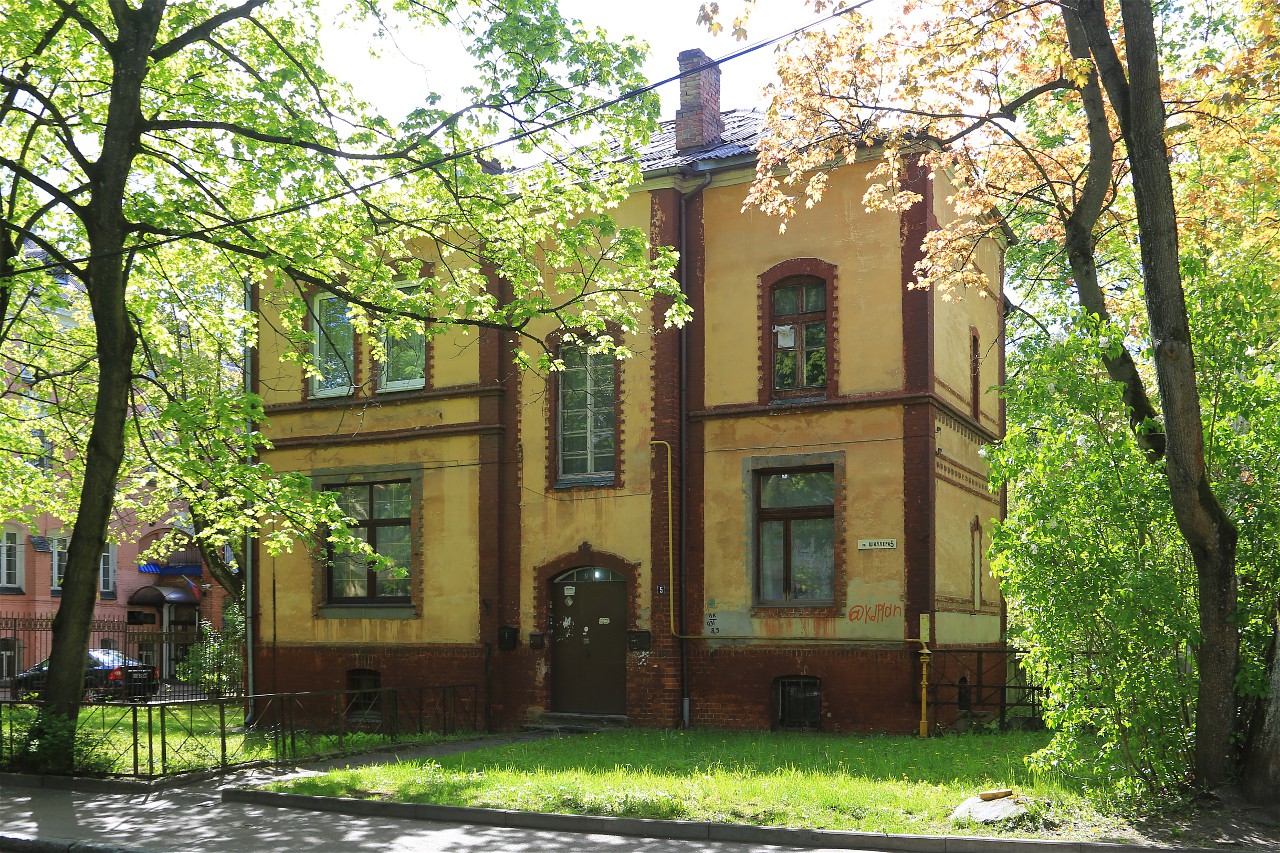
Next, at number 3, there is a brick building in the historicism style with large lancet windows and a high Gothic pediment, built in 1890 as a dormitory for students who do not have the means to rent housing.

The first shelter for poor students of the University of Konigsberg was opened in 1834 by Professor Ludwig Rhesa (1776-1840) and was named Rhesanium. After his death, a charitable society was created in his name, at the expense of which this hostel was built.
